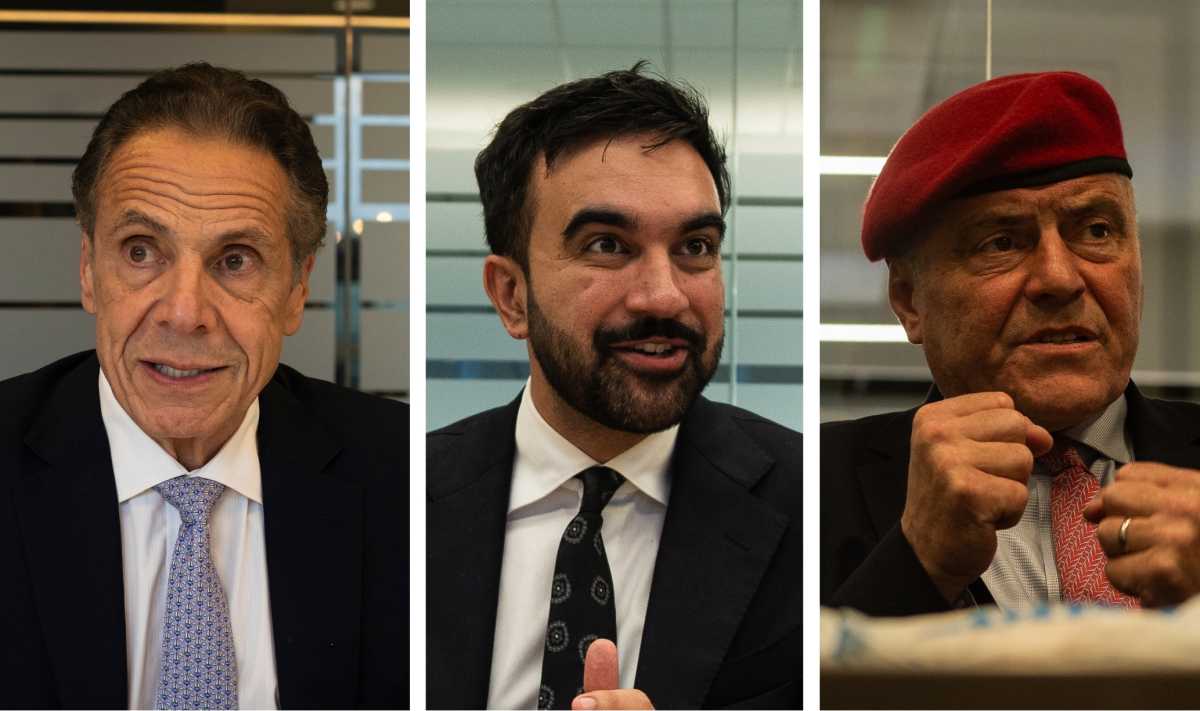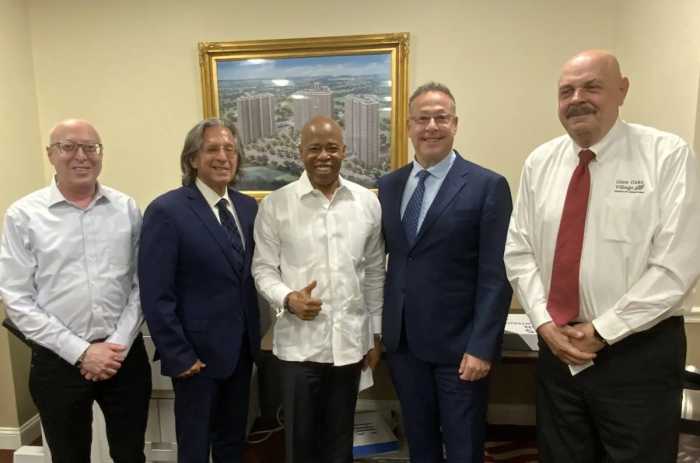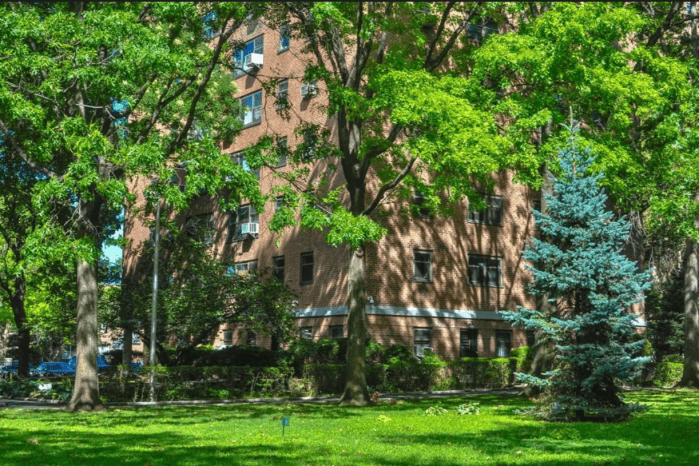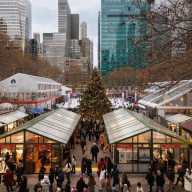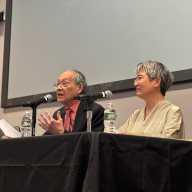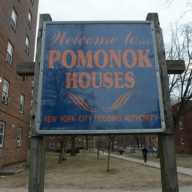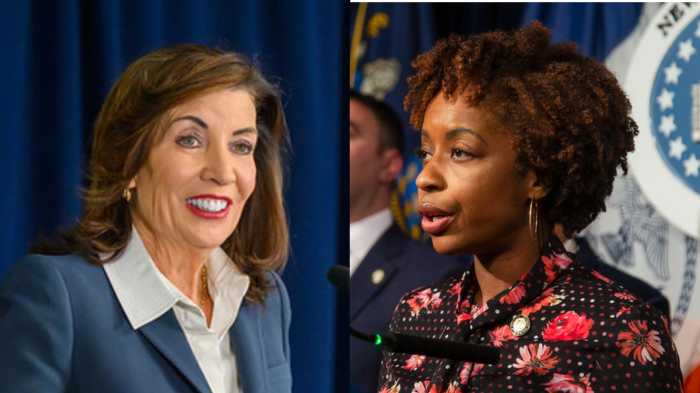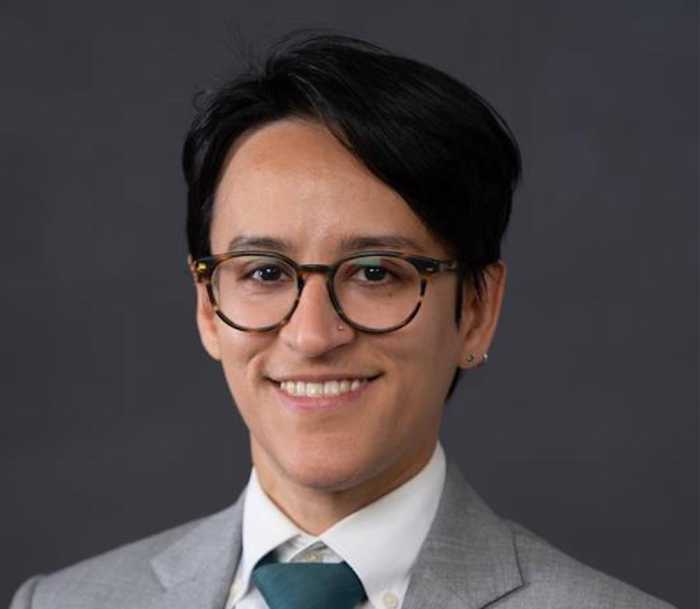More than 100 Queens co-op residents rallied against strict implementation of Local Law 97 (LL97), which was signed in 2019 and requires buildings over 25,000 square feet to cut their greenhouse emissions, citing affordability concerns in the face of high cost estimates.
The law has overwhelming support by environmental experts at institutions including Urban Green Council, Association for Energy Affordability Inc. and New Yorkers for Clean Power.
The law sets goals for carbon emission reductions — 40% by 2030 and 80% by 2050 — and requires building owners to make energy efficiency upgrades that reduce carbon emissions over a 25-year period to comply with increasingly stricter guidelines.
Building owners must also report their emissions to the NYC Department of Buildings each year. The first report was due May 1, and building owners will be required to file a report annually on that date moving forward.
According to the building department, building owners with qualifying properties will face penalties, in the form of fines, up to $268 per metric ton of carbon emissions over the building’s limit. These fines are also set to increase over time as emissions reduction goals tighten.
Building owners that do not or cannot comply with the emissions reduction goals, outlined on the building department’s website, could still avoid fees if they prove “good faith” efforts and have “actively planned for and taken concrete steps towards reducing emissions.”
The law’s environmental implications
Alicia White, an environmental activist and founder of Project Petals and Blue SKYie, said LL97 is an important piece of legislation to improve not only the environment but also the health of Queens residents.
“We’re kind of at an environmental crossroads right now when it comes to our climate,” White said. “Local Law 97 really works to reduce the offset of carbon emissions… Those emissions are responsible for health issues, asthma, respiratory illnesses, heart disease and things of that nature.”
According to the most recent statistics released by the New York State Department of Health, Queens had among the highest asthma rates in the state between 2017-19. The health department states there were 9.9 hospitalizations for asthma per 10,000 residents, adjusted for age, between those years.
A review published in this year’s Current Opinion in Environmental Science and Health edition notes “the effects of climate change on human health are supported by extensive scientific evidence,” and “climate change significantly impacts asthma through various direct and indirect pathways.”
White said the law targets the city’s infrastructure because, contrary to popular belief that transportation is responsible for most carbon emissions, a majority actually come from buildings. According to New York City Accelerator, 70% of carbon emissions in the city come from fossil fuels to cool, heat and power buildings.
Many city officials and residents are having conversations about funding, White acknowledged, and she pointed to subsidies provided through city entities, such as NYC Accelerator, Property Assessed Clean Energy, the Resilient and Equitable Decarbonization Initiative and the New York State Energy Research and Development Authority.
“Through these programs, NYSERDA provides support for building owners to identify and cost effectively make energy efficiency and electrification upgrades to increase comfort, improve indoor air quality, and reduce greenhouse gas emissions from heating and cooling in buildings,” a spokesperson for NYSERDA said in an emailed statement to QNS, “Integrating improvements into the already planned lifecycle of the property can accelerate deep energy savings for buildings through streamlined planning and construction.”
Concerns raised by co-op owners
However, building owners argued implementing the environmentally-friendly changes would be costly and even decrease energy efficiency. Co-op presidents and local officials hosted a rally against the law on Oct. 29, citing affordability concerns and lack of efficacy in addressing climate change.
Bob Friedrich, president of Glen Oaks Village, a self-managed co-op in northeastern Queens, said he reached out to NYSERDA and received an assessment of the 110-acre property, which includes 2,904 garden-style apartments across 134 buildings.
After the department provided recommendations for property-specific energy upgrades, which Friedrich claimed included full electrification of all the buildings, he said he was given an estimate of $70 million. That cost, he continued, would fall on the nearly 10,000 residents of the village, which he said come from middle-income families.
While he looked into grants available through NYSERDA, he said they were “on the margins” and would still be costly even if the co-op board could attain them. He said the department recommended a fixed-rate loan, but he said that was an insufficient solution.
“If you are overextended as an individual, and you go to the bank to get more in loans, you’re ruining your finances,” Friedrich emphasized. “You can’t keep taking loans out. So, no, a loan is not an answer.”
Steven Frost, 70, has been a resident of the village since 1985. He’s owned a two-bedroom apartment, that he estimates to be worth about $350,000, where he raised his children and ultimately retired.
Frost said he is currently receiving medical treatment for bone cancer.
“I’ve been very frugal throughout my life,” Frost said. “I have worked, I have saved. I never want to be a burden to my family.”
Currently, he said he pays $892 in maintenance fees each month. But, Frost said after residents were informed of estimates Friedrich received from NYERSDA, Frost calculated it would cost his entire social security check.
“It’s my savings,” Frost said. “It’s my finances for the future. If you suddenly cause my maintenance to go up radically — and I’m retired — how do I cover those costs? Do I have to go out now and get a job? Because now I need more money to cover my medical bills and everything. Is that fair?”
Alicia Fernandez, treasurer of the Queensview co-op apartment complex in Long Island City, said she first commissioned an environmental engineering report in 2019 when the law was originally passed. She said she faced similar circumstances to Friedman, citing a $60 million estimate to complete the project that would fall on 726 middle-income households in the co-op.
“It would drive out a lot of people, a lot of young families, that took out loans into bankruptcy to meet their debt,” Fernandez said.
Since then, however, adjustments have been made to LL97 including updated emissions limits, adjustment options for those facing financial hardship, “good faith effort” definitions, penalty mitigation, and credits for beneficial electrification.
After a recent assessment, Fernandez said full-electrification is no longer recommended, but rather upgrades such as cladding, installation of triple-pane windows and window heat pumps.
She argued that while the initial goal of LL97 was to reduce dependence on fossil fuels for energy, nearly 50% of electricity in the state is produced by fossil fuels, so those changes wouldn’t solve the problem, anyway.
According to a 2023 energy profile report from the U.S. Energy Information Administration, 46% of the state’s electricity net generation were accounted for by natural gas-fired power plants.
That is why, she said, her main goal is to address outdated facades on the Queensview buildings, which were built in 1942.
Ultimately, Fernandez said, the issue comes down to money, which she communicated during a Zoom meeting with U.S. Rep. Ritchie Torres.
“I said, ‘If you wrote me a $10 million check to put in triple pane windows, the contract would be signed by the end of this call,’” she recalled saying during the meeting. “So yes, it’s very financial. We have the logistics and other things to deal with, and we can deal with them. But ultimately, the impediment is finances.”
What the mayoral candidates have to say
As for the mayoral candidates, their positions on handling LL97’s implementation vary.
Republican candidate Curtis Sliwa has long said the law “goes too far” and has claimed on his X account that “protecting the environment matters but this law is forcing longtime New Yorkers out of the apartments they’ve lived in for decades… As mayor, I’ll freeze enforcement on day one, begin a full audit, stop the fines, and fight to fix or repeal this deeply flawed law.”
While many of the attendees of the rally supported candidate Andrew Cuomo, as did the city officials who spoke at the rally, Cuomo has not officially announced a policy proposal for handling the law, but has claimed he’s open to modifying it.
A spokesperson for Cuomo said the cost of hooking up buildings that are otherwise using their own power sources or generators to the state’s Con Edison power grid is “astronomical,” describing the law as a “money grab.”
ConEd is the city’s primary electricity provider and largest investor-owned energy companies in the country and is generally more expensive than competitors such as National Grid and PSEG. However, under LL97, there is no stated requirement for buildings completing electrification projects to hook up to the ConEd grid, specifically.
“The intent of the law was to fight climate change and prepare for New York’s future, but the way it’s written is not workable,” the spokesperson said. “[Cuomo] heard the people in the co-ops loud and clear. He thinks the situation is ridiculous. He committed to having them at the table to help negotiate a new, sensible law.”
The spokesperson did not clarify whether Cuomo’s intention in those negotiations would be to lengthen the timeline or lower the carbon emission reduction goals.
Many environmentalists, including those at New York League of Conservation Voters, have argued the climate crisis is too dire to tolerate further weakening of the law and advocated for better funding, instead.
Candidate Zohran Mamdani’s office did not respond to QNS’ request for comment as of press time, but Mamdani has previously discussed LL97 and said he supports full implementation of it. His campaign website states his climate platform would “include building out renewable energy on our abundant public lands and fulfilling the vision of Local Law 97 through greater enforcement and assistance from the City for middle-income homeowners.”
In addition, his website states, “…as ConEd tries to raise utility rates by over 10%, Zohran will firmly oppose these exorbitant hikes…” Through these policies, he said he plans on better funding energy upgrades required by the law rather than weakening it.
Funding, his website states, would be provided by raising the corporate tax rate to 11.5 percent to match that of New Jersey, as well as a flat 2% tax on the wealthiest 1 percent of New Yorkers, which he said would generate close to $10 billion.


